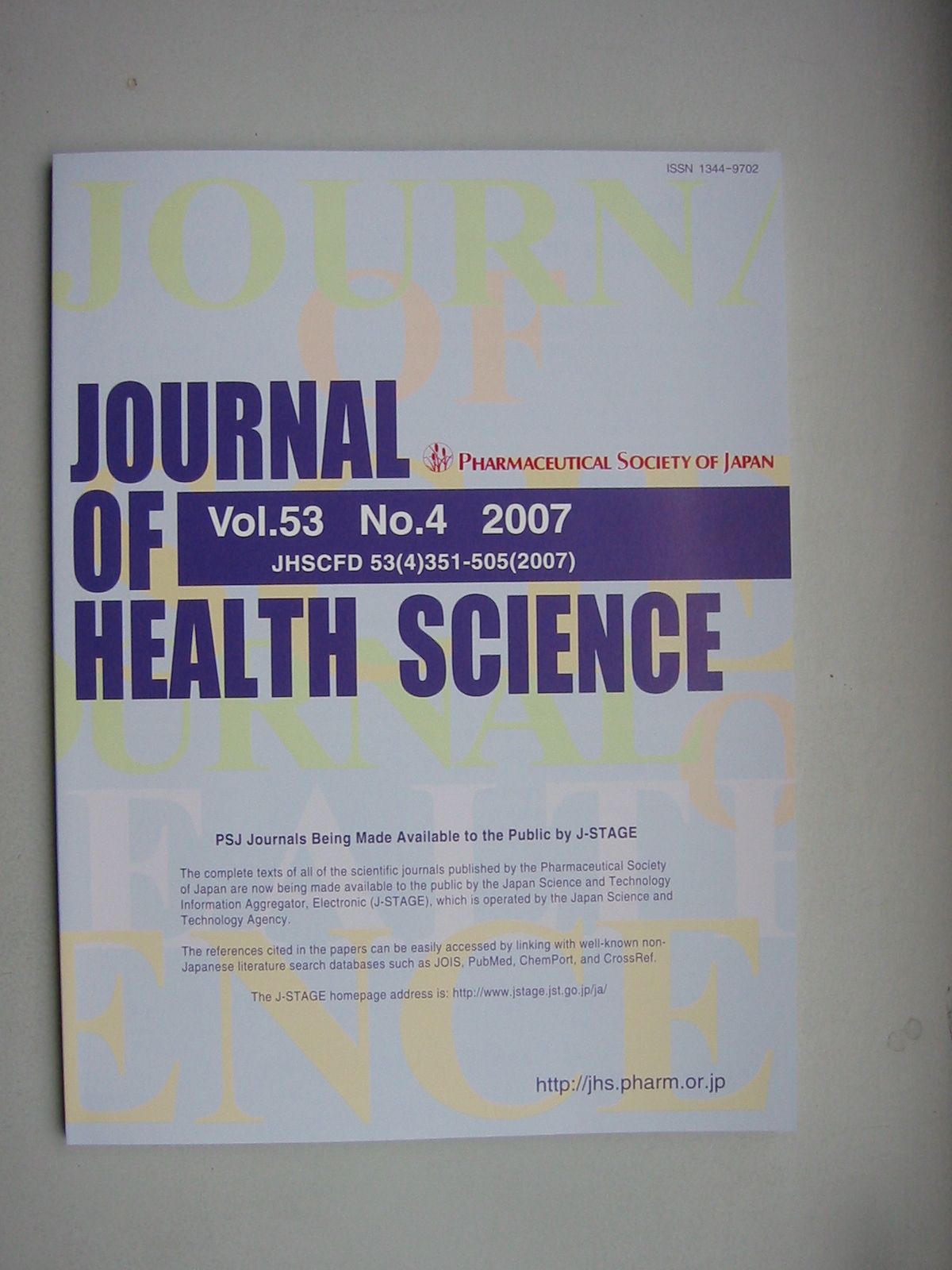Volume 52, Issue 1
Displaying 1-16 of 16 articles from this issue
- |<
- <
- 1
- >
- >|
REVIEW
-
2006Volume 52Issue 1 Pages 1-8
Published: 2006
Released on J-STAGE: February 01, 2006
Download PDF (435K)
REGULAR ARTICLES
-
2006Volume 52Issue 1 Pages 9-16
Published: 2006
Released on J-STAGE: February 01, 2006
Download PDF (489K) -
2006Volume 52Issue 1 Pages 17-23
Published: 2006
Released on J-STAGE: February 01, 2006
Download PDF (442K) -
2006Volume 52Issue 1 Pages 24-29
Published: 2006
Released on J-STAGE: February 01, 2006
Download PDF (470K) -
2006Volume 52Issue 1 Pages 30-35
Published: 2006
Released on J-STAGE: February 01, 2006
Download PDF (122K) -
2006Volume 52Issue 1 Pages 36-42
Published: 2006
Released on J-STAGE: February 01, 2006
Download PDF (594K) -
2006Volume 52Issue 1 Pages 43-49
Published: 2006
Released on J-STAGE: February 01, 2006
Download PDF (99K) -
2006Volume 52Issue 1 Pages 50-57
Published: 2006
Released on J-STAGE: February 01, 2006
Download PDF (500K)
RESEARCH LETTERS
-
2006Volume 52Issue 1 Pages 58-62
Published: 2006
Released on J-STAGE: February 01, 2006
Download PDF (304K) -
2006Volume 52Issue 1 Pages 63-66
Published: 2006
Released on J-STAGE: February 01, 2006
Download PDF (54K) -
2006Volume 52Issue 1 Pages 67-72
Published: 2006
Released on J-STAGE: February 01, 2006
Download PDF (336K)
RAPID COMMUNICATIONS
-
2006Volume 52Issue 1 Pages 73-77
Published: 2006
Released on J-STAGE: February 01, 2006
Download PDF (96K) -
Identification Tests of Aristolochic Acid in Crude Drugs by Reversed-Phase TLC/Scanning Densitometry2006Volume 52Issue 1 Pages 78-81
Published: 2006
Released on J-STAGE: February 01, 2006
Download PDF (114K) -
2006Volume 52Issue 1 Pages 82-84
Published: 2006
Released on J-STAGE: February 01, 2006
Download PDF (285K) -
2006Volume 52Issue 1 Pages 85-90
Published: 2006
Released on J-STAGE: February 01, 2006
Download PDF (133K) -
2006Volume 52Issue 1 Pages 91-95
Published: 2006
Released on J-STAGE: February 01, 2006
Download PDF (104K)
- |<
- <
- 1
- >
- >|
